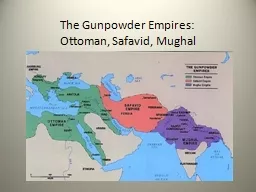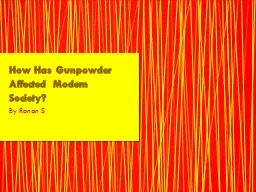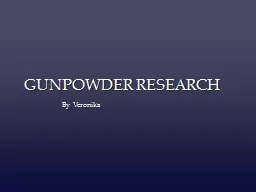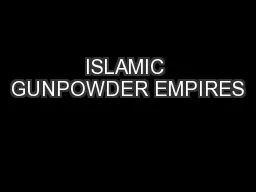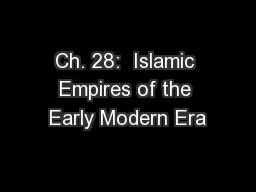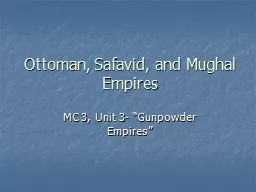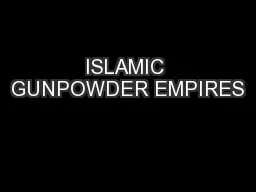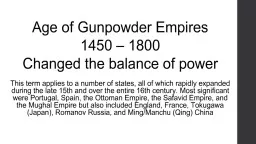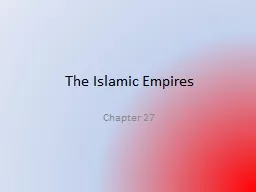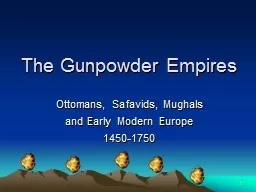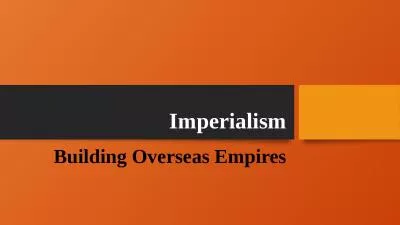PPT-The Gunpowder Empires: Ottoman,
Author : briana-ranney | Published Date : 2018-10-30
Safavid Mughal Ottoman Origins One of many Muslim warrior groups on East frontier of Byzantine Empire Conquered much of western Anatolia amp Balkan Peninsula
Presentation Embed Code
Download Presentation
Download Presentation The PPT/PDF document "The Gunpowder Empires: Ottoman," is the property of its rightful owner. Permission is granted to download and print the materials on this website for personal, non-commercial use only, and to display it on your personal computer provided you do not modify the materials and that you retain all copyright notices contained in the materials. By downloading content from our website, you accept the terms of this agreement.
The Gunpowder Empires: Ottoman,: Transcript
Download Rules Of Document
"The Gunpowder Empires: Ottoman,"The content belongs to its owner. You may download and print it for personal use, without modification, and keep all copyright notices. By downloading, you agree to these terms.
Related Documents

